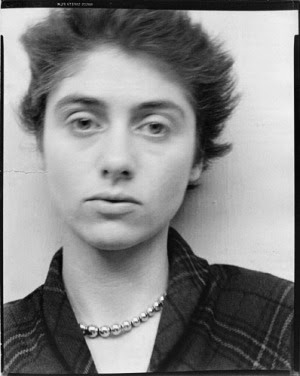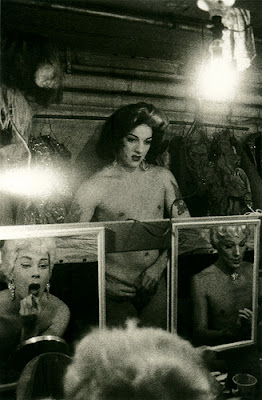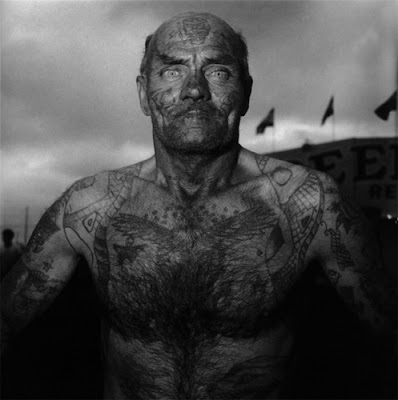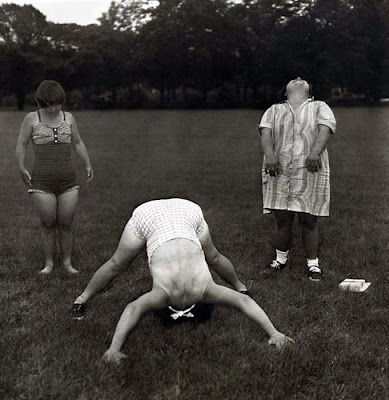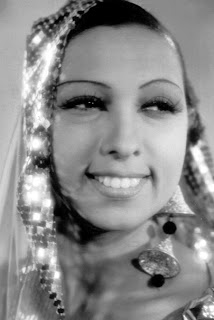Note: Coming across this press release from Doyle New York yesterday, I felt compelled to share it. I first "consciously" discovered Arthur Rothstein's photographs over the last couple of years on Tom Clark's Beyond The Pale blog, which has featured a remarkable history of the Great Depression literally seen through the lenses of the great photographers who were employed by various federal agencies during the period and charged with recording contemporary American history. I say "consciously" discovered because, like many of these photographers, one couldn't grow up during the later 20th century in the United States without having seen a good deal of Rothstein's photojournalism. I will try to attend the auction. The prices look to be within reach of interested collectors and very modest for works of this quality and provenance.
Arthur Rothstein at work
NEW YORK, N.Y.-
Doyle New York to auction the Arthur Rothstein Photograph Collection on Thursday, October 13, 2011 at 10am. The auction offers almost two thousand prints, vintage through 1980s, from the collection of his wife, Grace Rothstein. The images span Rothstein's long career as an award-winning photojournalist, and feature iconic Depression-era images including his iconic Dust storm, Cimarron County, Oklahoma; as well as photographs of African-Americans in the rural South, England after the Blitz, Jewish refugees in Shangai, and stark images of rural China.
The Tennessee Valley Authority brings power to the South, Alabama, 1942
ARTHUR ROTHSTEIN
Arthur Rothstein was born in New York City in 1915 and became one of the most prolific and influential photographers of the 20th century. The broad scope of his work parallels that of American life from the Great Depression through the Reagan years, as well as international events from post-War famine in China to May Day in Moscow’s Red Square at the height of the Cold War. From Welsh coal miners to the Reichstag in ruins, to the unique documentation of the Jewish refugee population in Shanghai after World War II, it was said of Arthur Rothstein that he went everywhere, saw everything and brought his camera.
The images in the Arthur Rothstein Photograph Collection range from the historical events that touched us all – Roosevelt meets with Churchill, President Kennedy’s funeral procession – to images equally profound, if on a smaller scale. We see, in contrast to the national display of mourning for President Kennedy, the devastation of an anonymous personal loss as a father places his emaciated son, stricken by famine, in a grave in rural China in the forties. Who will bear witness to this tragedy, the photographer seems to say rhetorically. His answer: Now we all will.
Night view, downtown Dallas, January 1942
And similarly, there is the power of the iconic Dust Storm, Cimarron County image, widely regarded as one of the most ubiquitous images of the 20th century. We also see dignity in the face of the unemployed black man in Alabama during the Depression, adjusting his tie in the mirror, getting ready for Saturday night. And the regal face of a young girl in the window of a mud shack in Gee’s Bend. But there is a subtle humor as well. Arthur Rothstein was a pioneer in the use of what he called the “third effect”, a message that emerges when an image contains the wry juxtaposition of the written word. A shoe shine man in New York City sits under a sign quoting Disraeli on the importance of being in the right place when opportunity knocks. And then there is the display of dazzling technical expertise as pitcher Eddie Lopat delivers a fastball, his arm moving faster than the shutter speed. The Arthur Rothstein Photograph Collection is stunning in its power, scope, technical prowess and beauty.
Arthur Rothstein was a gifted student, graduating from Stuyvesant High School and enrolling in Columbia College at age sixteen as a chemistry major. He developed an interest in photography from the technical side, working with film development techniques and eventually becoming a founding member of the camera club at Columbia. Upon graduation he was offered a job by Columbia economist Roy Stryker. Stryker had been asked by colleagues in the Roosevelt administration to form a group of documentary photographers to work within what eventually became known as the Farm Security Administration. In addition to Arthur Rothstein, the FSA photographers included Dorothea Lange, Ben Shahn, Walker Evans, Gordon Parks, Russell Lee, Carl Mydans, John Vachon and Marion Post Walcott, among others. Together they produced some of the defining images of the 20th century. Many of the works in this collection are among them.
Girlie show at carnival, Bozeman, Montana, Summer 1939
One of the most extraordinary things about Arthur Rothstein was that he excelled in so many different photographic disciplines. He was not at all satisfied to be a documentary photographer alone, although he was a great one. He also excelled as a news photographer, a contract assignment photographer, a food photographer (often working with the food stylist Sylvia Schur), a commercial advertising photographer, and, of course, a pure visual artist, evidence of which is abundant throughout this collection. When asked what he felt his greatest strength was as a photographer, he invariably replied with one word: versatility.
Arthur Rothstein served during World War II in the Army Signal Corps and was stationed primarily in what is now known as Myanmar, formerly Burma. After the war, he resumed his career at Look magazine, in the position of Technical Director of Photography, a title he held until Look ceased publication in 1970. In that capacity he continued to travel the world on assignment, often bringing his wife Grace, an accomplished portrait photographer in her own right, with him to assist. He placed particular emphasis on the word “technical” as it appeared in his title with his name on the Look masthead. This was a part of his personality that permeated his life: he was an extraordinarily self-assured and competent person and wanted to emphasize that at the core of his craft was a comprehensive technical knowledge. This technical emphasis, a vestige of his earliest interest in photography as a chemistry student at Columbia, never left him. He continued to explore and develop new photographic techniques, including the Xograph three dimensional photo system. Arthur Rothstein was renowned for his technical expertise, and film and camera manufacturers, including Leica, Hasselblad, Kodak and Polaroid, would often send him prototypes as a routine part of their R&D process. He authored numerous published books, some of which were compilations of his documentary and other photographs, but several of his books were of a purely technical nature.

Administering the Darrow photopolygraph test, Narcotic Farm, Kentucky 1930
But beyond all of this expertise, or perhaps because of it, we can see in this collection the profound gifts of an extremely intelligent communicator. On a personal note, I can say unequivocally that Arthur Rothstein had the rare ability to speak in complete, fully formed paragraphs. If you asked him question, the response would start with a topic sentence, followed by a declarative exposition, and finally, a recapitulating conclusion. This, it seems, was a skill cultivated more in the education of people born a hundred years ago than it is today. It was the ability to improvise and compose simultaneously for the purpose of enhancing communication. We see this expressed in his craft, analogous to a great jazz solo: extemporaneous and visceral, but elegantly structured. Moments in time, fully formed.
Syringes seized from patients admitted to Narcotic Farm, Kentucky. 1930
Throughout his life Arthur Rothstein sought to combine his prodigious technical and compositional skills in the service of compelling visual communication. He frequently referred to a quote from one of his influences, the photographer Lewis Hine, that the purpose of a photograph is “to show what needs to be appreciated and to show what needs to be changed.” The Arthur Rothstein Photograph Collection is evidence of his abundant success in advancing that ideal.
"Because powerful images are fixed in the mind more readily than words, the photographer needs no interpreter. A photograph means the same thing all over the world and no translator is required. Photography is truly a universal language, transcending all boundaries of race, politics and nationality." -- Arthur Rothstein
Migratory worker, Robstown, Texas, January 1942
